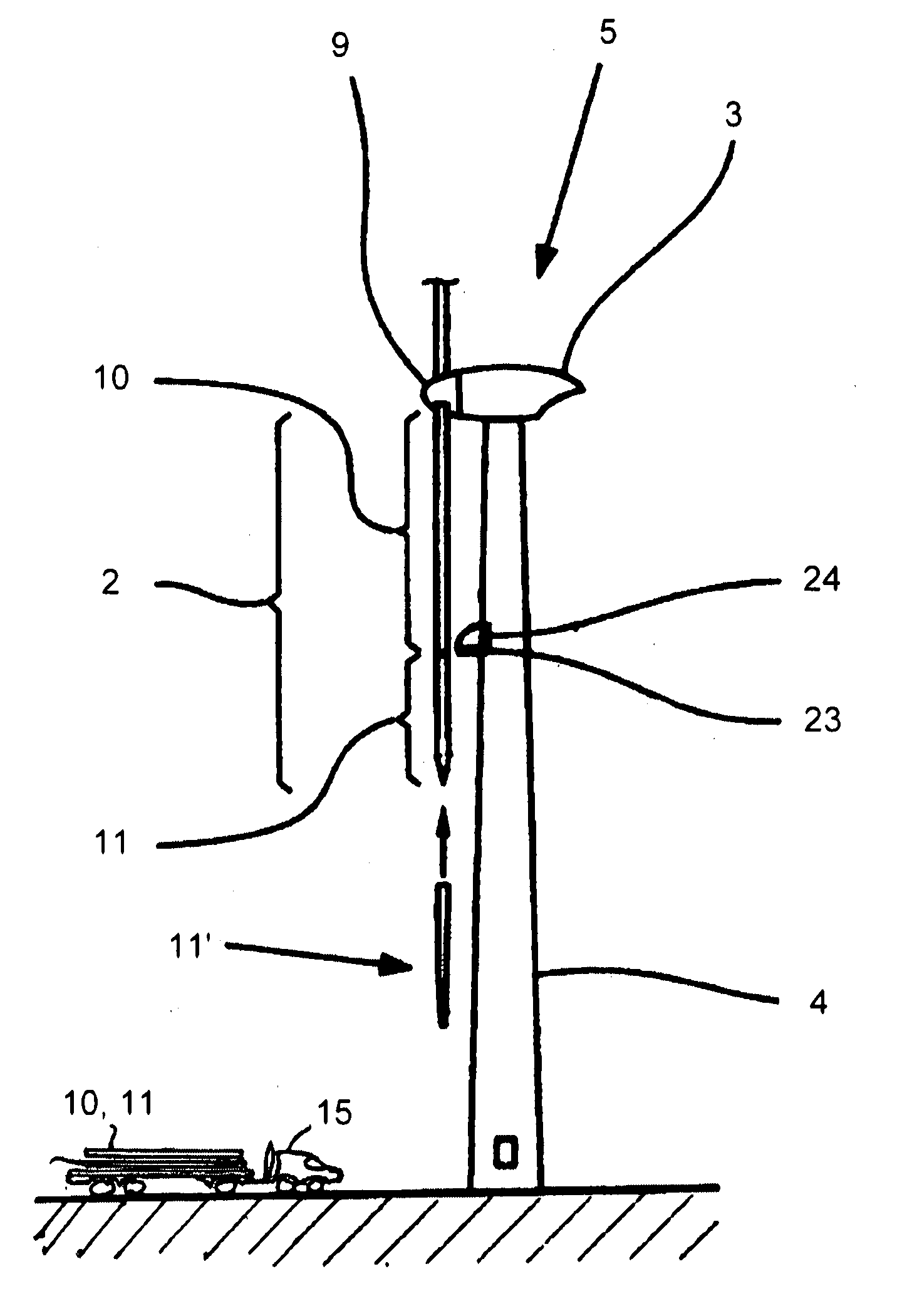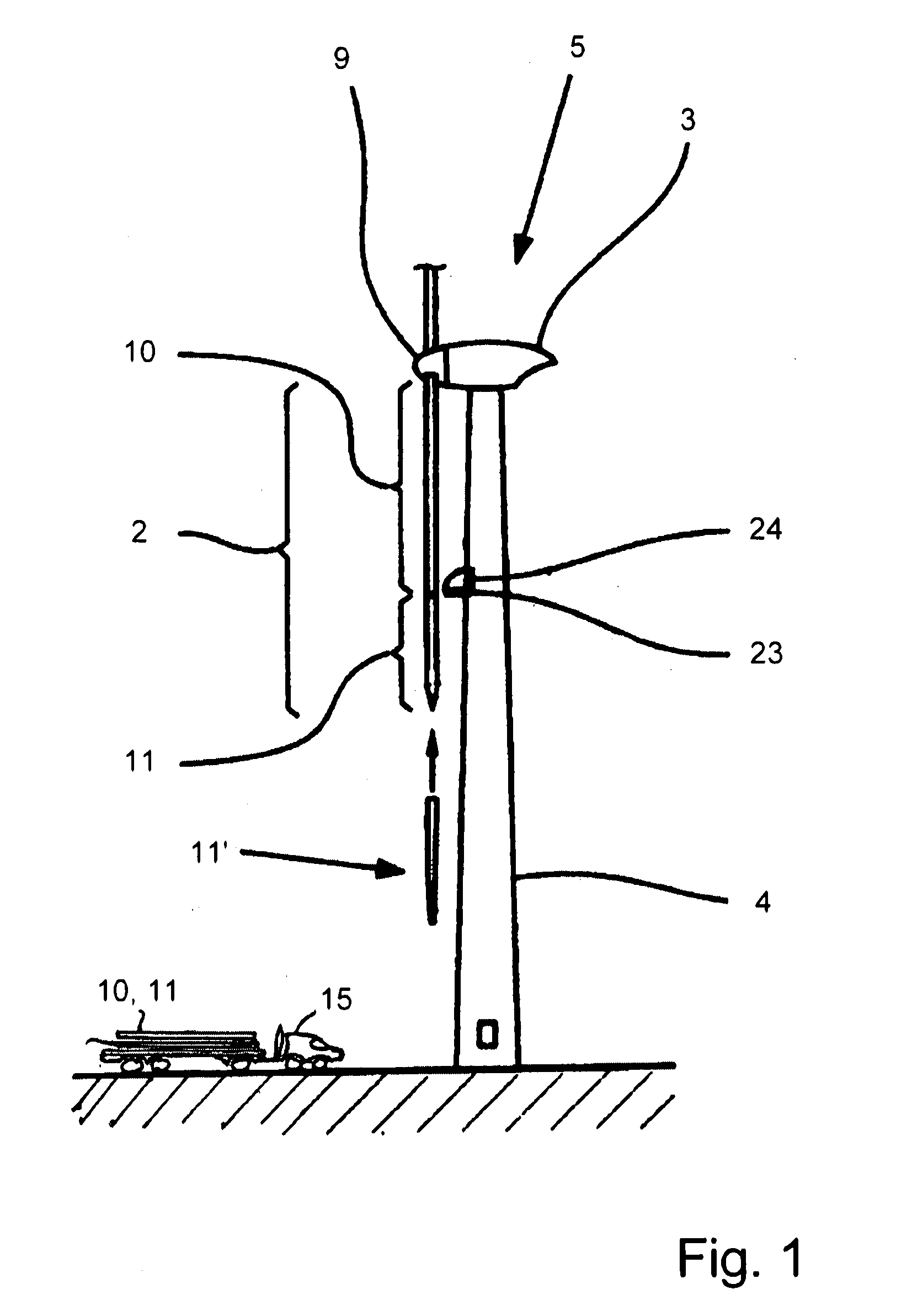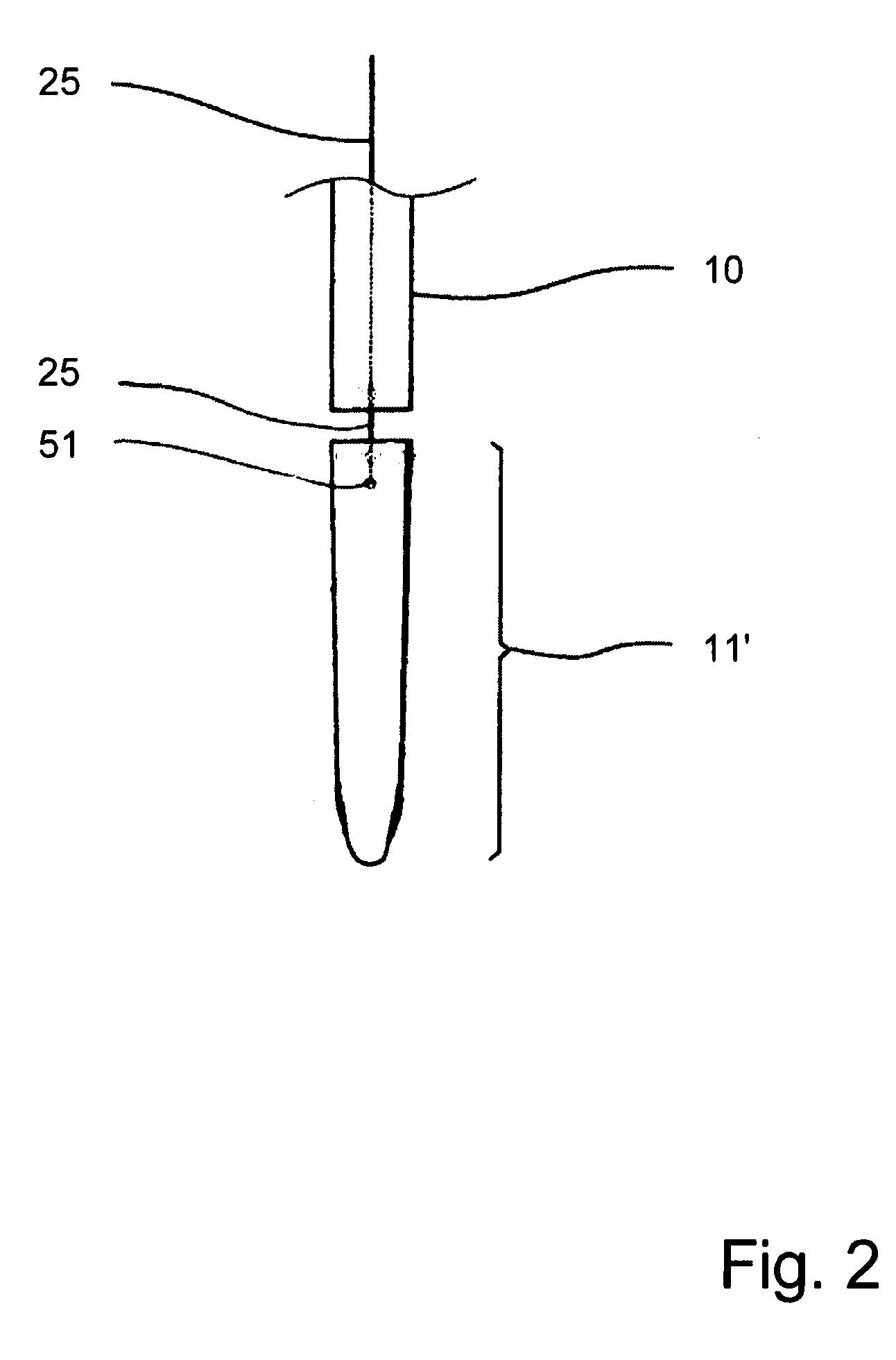Modular rotor blade for a power-generating turbine and a method for assembling a power-generating turbine with modular rotor blades
a technology of modular rotor blades and power-generating turbines, which is applied in the direction of machines/engines, manufacturing tools, forging/pressing/hammering apparatus, etc., can solve the problem that wind turbine blades greater than 50 m in length cannot be transported over land using conventional equipment and technology, and achieve the effect of reducing transportation costs, reducing the cost of installation of wind turbines, and reducing the cost of large wind turbine blades
- Summary
- Abstract
- Description
- Claims
- Application Information
AI Technical Summary
Benefits of technology
Problems solved by technology
Method used
Image
Examples
first embodiment
With respect to FIG. 3, which is a perspective view of the modular rotor blade of FIG. 1 according to the present invention, the modular rotor blade comprises the first rotor blade section 10, which connects to the (not shown) rotor hub 9, and the second rotor blade section 11 that connects to the first rotor blade section 10 by, inter alia, means of a connecting part 14 and a connecting part 16.
In this embodiment the connecting part 14 of the second rotor blade section 11, the second connecting part 14, is formed as a beam with two side walls, and upper and lower sides (connecting part 14 can also be referred to as a “tongue”), and the connecting part 16 of the first rotor blade section 10, the first connecting part 16, is formed as a receptacle (and can also be referred to as a “fork”). The first connecting part 16 is adapted to receive the second connecting part 14, and the cross section of the second connecting part 14 is adjusted to the cross section of the first connecting par...
second embodiment
With respect to FIG. 7, there is shown a detailed view of the present invention. The connecting part 16 of the first rotor blade section 10 encloses the connecting part 14 of the second rotor blade section 11. Both connecting parts 14, 16 comprise two conical through holes. In the connected state of the rotor blade sections 10, 11 the connecting parts 14, 16 rest against each other such that the conical through holes of the enclosing connecting part 16 are aligned with the two through holes of the enclosed connecting part 14, thereby defining two continuous conical connecting through holes, i.e. the through holes of the connecting parts, and therefore the continuous conical connecting through holes are arranged on the same longitudinal axis in the connected state of the rotor blade sections 10, 11. The through holes of the connecting parts 14, 16 are provided in such a manner that the openings with the greater diameter widens towards the outer surfaces of the connecting parts 14, 16...
third embodiment
FIG. 8 shows a detailed view of the present invention, wherein the upper half of FIG. 8 is a sectional view through two conical bolts 30, whereas the lower half of FIG. 8 is a top view.
The third embodiment utilizes an enclosing connecting part 16 and an enclosed connecting part 14. In contrast to the second embodiment the enclosed connecting part 14 is solid, i.e. no separate side walls and therefore no space within the connecting part is provided. Accordingly, the enclosed connecting part 14 is not hollow. The enclosing connecting part 16 comprises two conical through holes and the enclosed connecting part 14 comprises one through hole, wherein the through holes are, in the assembled state of the modular rotor blade, arranged on the same longitudinal axis. The through hole of the enclosed connecting part 14 is formed as a double conical through hole, wherein the openings with the greater diameter open up to the outer surfaces of the enclosed connecting part. The conical through hol...
PUM
| Property | Measurement | Unit |
|---|---|---|
| length | aaaaa | aaaaa |
| inclination angle | aaaaa | aaaaa |
| inclination angle | aaaaa | aaaaa |
Abstract
Description
Claims
Application Information
 Login to View More
Login to View More - R&D
- Intellectual Property
- Life Sciences
- Materials
- Tech Scout
- Unparalleled Data Quality
- Higher Quality Content
- 60% Fewer Hallucinations
Browse by: Latest US Patents, China's latest patents, Technical Efficacy Thesaurus, Application Domain, Technology Topic, Popular Technical Reports.
© 2025 PatSnap. All rights reserved.Legal|Privacy policy|Modern Slavery Act Transparency Statement|Sitemap|About US| Contact US: help@patsnap.com



